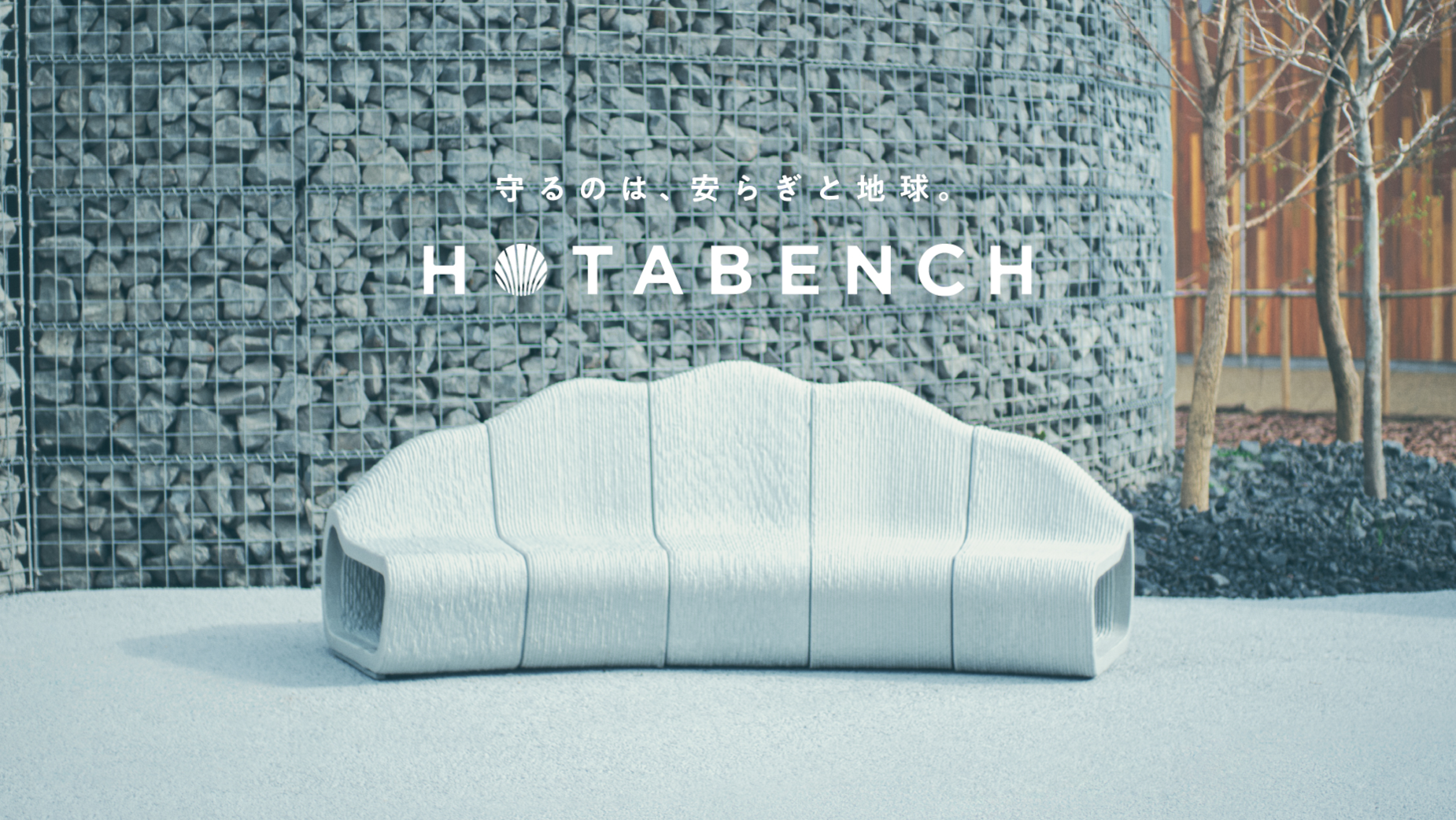
TBWA\HAKUHODO Turns Shells into Seats for Expo 2025 Osaka

TBWA\HAKUHODO has unveiled HOTABENCH, a bench made from upcycled scallop shells, developed in collaboration with Koushi Chemical Industry and Shimizu Corporation. Now on display at the Future Life Village at Expo 2025 Osaka, Kansai, the installation showcases how marine waste can be reimagined into sustainable public infrastructure.
HOTABENCH is a sustainable bench made from over 1,000 discarded scallop shells, breathing new life into materials that would otherwise be waste. The bench also leverages 3D printing technology, helping to reduce CO₂ emissions during production.

Previously, the HOTA series (named after hotate, the Japanese word for scallop) has explored upcycling scallop shells into products such as SHELLMET (a helmet, product name: HOTAMET), HOTATETRAPOD (coastal tetrapods), and HOTASCOOP (scoops). With Expo 2025 in mind, HOTABENCH continues this effort by transforming waste into a place of rest within the Expo venue. As with the HOTATETRAPOD project, HOTABENCH was developed in collaboration with Koushi Chemical Industry and Shimizu Corporation.
Key Features of HOTABENCH:
1. Incorporates 40kg of Upcycled Scallop Shells per Bench - Each bench replaces approximately 40 kilograms of traditional sand components with scallop shells that would otherwise be discarded.
2. Reduces CO₂ Emissions by Approximately 300kg - Compared to a conventional concrete bench, the use of shell-derived materials cuts CO₂ emissions by around 300 kilograms. Additionally, the use of 3D printing - rather than traditional formwork - further minimises emissions during production.
3. Nature-Inspired, Circular Design - Inspired by the natural structure of scallops, HOTABENCH features a distinctive ribbed form based on biomimicry principles. Instead of sanding down the layered textures left by large-scale 3D printing, the design highlights them - embracing the raw beauty of sustainable innovation.

Comment from Tatsuya Ogawa, construction technology division, Shimizu Corporation,
“HOTABENCH utilises Shimizu’s proprietary 3D printing construction technology to produce benches without the need for traditional formwork. This method enables greater freedom and creativity in design. The use of LACTM, a fibre-reinforced mortar optimised for 3D printing, also allows us to partially replace the sand component with scallop shells.
For this project, we sourced scallop shells not only from Sarufutsu Village along the Okhotsk coast in Hokkaido, but also from Uchiura Bay (Hokkaido) and Mutsu Bay (Aomori Prefecture). Since the shells from each region differ slightly in material properties due to their distinct marine environments, extensive testing was required to determine the optimal mix ratio. We hope visitors will experience this culmination of material innovation and sustainable design for themselves at Expo 2025.”

Comment from Kenji Matsuda, art director, TBWA\HAKUHODO, “Following HOTAMET and HOTATETRAPOD, HOTABENCH is the first product in the HOTA series created using 3D printing. Typically, 3D-printed objects are smoothed to eliminate the layered 'print lines'. For HOTABENCH, however, we intentionally retained them. These textures naturally resemble the ribbed structure of a scallop shell, reinforcing the bench’s organic inspiration.
Of course, we removed any sharp edges to ensure seating comfort, but otherwise embraced a more tactile, raw aesthetic that reflects the shell’s natural surface. The bench’s silhouette also takes its cue from the shape of a scallop, resulting in a friendly, inviting form that avoids the cold rigidity often associated with public furniture. We aimed to create a design that offers a sense of warmth and comfort for both children and adults.”















